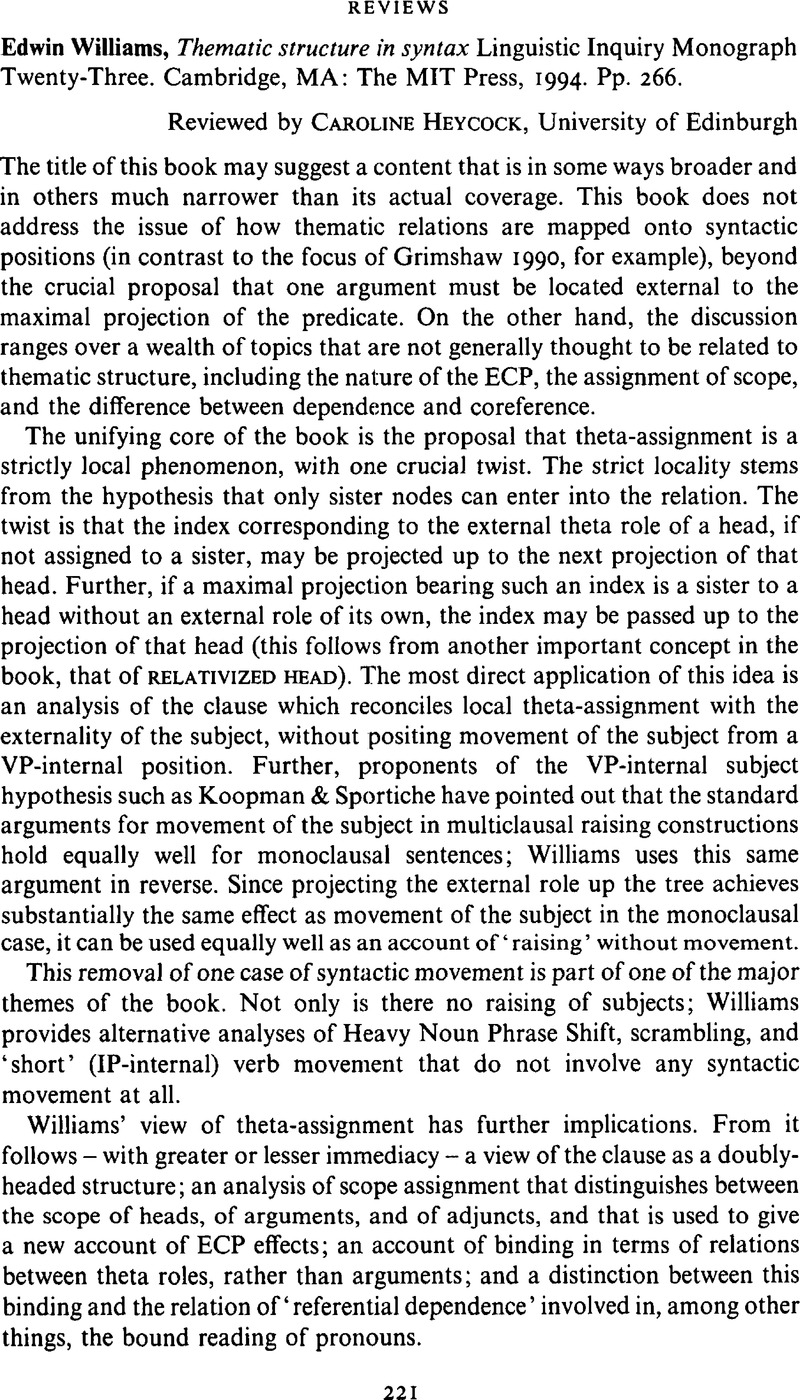No CrossRef data available.
Article contents
Edwin Williams, Thematic structure in syntax Linguistic Inquiry Monograph Twenty-Three. Cambridge, MA: The MIT Press, 1994. Pp. 266.
Review products
Edwin Williams, Thematic structure in syntax Linguistic Inquiry Monograph Twenty-Three. Cambridge, MA: The MIT Press, 1994. Pp. 266.
Published online by Cambridge University Press: 28 November 2008
Abstract
An abstract is not available for this content so a preview has been provided. Please use the Get access link above for information on how to access this content.

- Type
- Reviews
- Information
- Copyright
- Copyright © Cambridge University Press 1996
References
Holmberg, A. (1986). Word order and syntactic features. Ph.D. dissertation, University of Stockholm.Google Scholar
Roberts, I. (1985). Agreement parameters and the development of the English modal auxiliaries. Natural Language and Linguistic Theory. 3 21–58.CrossRefGoogle Scholar
Travis, L. (1984). Parameters and effects of word order variation. Ph.D. dissertation, MIT.Google Scholar
Vikner, S. (1990). Verb movement and the licensing of NP positions in the Germanic languages. Ph.D. dissertation, University of Geneva.Google Scholar


